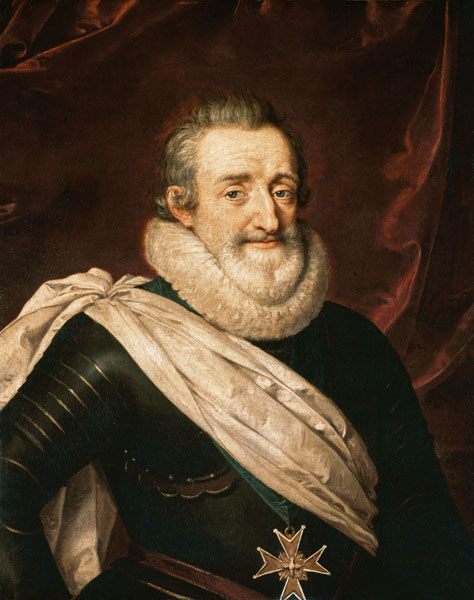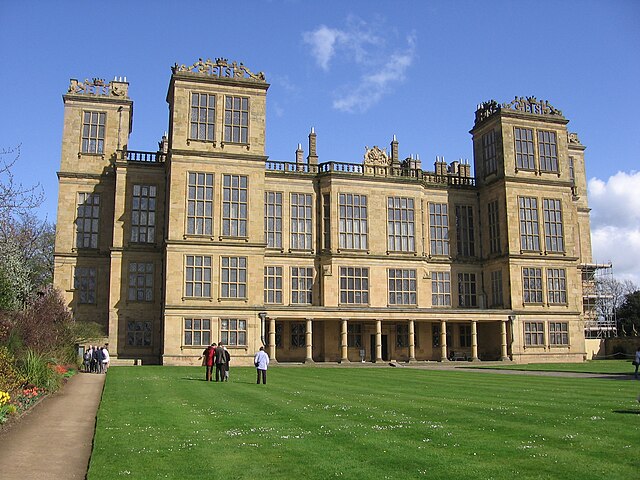A Spanish Marriage
 |
| Ranuccio Farnese |
In 1590 an English agent was being employed by Sir Robert Cecil to
promote the marriage between the fifteen year old Arbella and Ranuccio
Farnese, one of the Duke of
Parma’s sons. For a short period of time national interests ran in line
with the interests of Arbella’s relations. The marriage was being promoted by
the Spanish ambassador Bernardino de Mendoza
.
The marriage was originally proposed several years earlier,
but had fallen in the Armada’s wake. Indeed James had written to Elizabeth
insisting that Arbella should not be married to anyone without his express
consent. During a visit to London a number of paintings of Arbella were
prepared, at the request of the Farnese family, including one by Nicholas Hilliard.
That Christmas Arbella received a letter from her cousin,
James acknowledging for the first time;
‘The
strict band of nature and blood, whereby we are linked to [one] another.’[i]
Lord Shrewsbury died on 18th November 1590,
leaving Arbella’s grandmother a free woman, again in control of her fortunes.
 |
| Duke of Palma |
Two years later on another trip to court the Farnese
marriage was still being held open as an option. The death of the Duke of Parma
killed off the proposed Farnese marriage as the new Duke did not have his
illustrious father’s influence at the Spanish court.
Arbella was more interested in Essex, Elizabeth’s current
favourite, causing much gossip at court; but Essex remained a friend to Arbella
until his death in 1601. Essex’s death resulted in a year of melancholia on
Arbella’s part, leading her grandmother to wonder whether Arbella was mentally
unstable[ii].
A Spanish Plot
In 1595 Bess was informed by Lord Burghley of a Spanish plot
to kidnap Arbella; the plot was revealed by a Jesuit priest under torture.
Convinced that Arbella would be proclaimed queen when Elizabeth died, the
plotters planned to carry her off to Spain.
Bess was advised to search the area around Hardwick for
‘traitorous and naughty persons.’ Bess told Burghley that there was only one
suspicious person nearby and he was Arbella’s tutor Morley. Morley[iii] had demanded more monies
to teach Arbella and when that was refused he left, only to return and offer to
work for free. As Bess advised Burghley;
‘I
will not have any unknown or suspected person come to my house……..Arbell walks
not late; at such time as she shall take the air it shall be near the house,
and well attended on……I see her almost every hour in the day; she lieth in my
bedchamber.’[iv]
More Marriage Plans |
| Henry IV of France |
In 1590 it was suggested that Arbella might be a suitable
wife for Archduke
Matthias[v];
this was more a political tool to scupper a planned marriage with Matthias and
a French princess, than a practical proposal. The French marriage went ahead,
but Henri IV offered one of
his bastard sons as a match for Arbella. Sir
John Harington[vi]
was horrified;
‘A
goodly young lady, aged about twenty four years, should be so disparaged as to
be matched with a bastard of France under fourteen.’[vii]
By 1592 Henri’s plans changed, negotiations to annul his
marriage to Marguerite
de Valois had commenced and Henri was now looking for a new wife to provide
an heir. Henri and his minister the Duc
de Sully, were prepared to consider Arbella as a candidate;
‘Nor
would I refuse Princess Arbella of England, if, it is said the Crown of England
really belongs to her, she were only declared presumptive heiress of it.’[viii]
Trapped
 |
| Hardwick Hall |
On 4th October 1597 Bess and the family moved
into Hardwick Hall.
Arbella shared a suite of rooms with her grandmother. The twenty-two year old Arbella
now had her own bedchamber; there was also a blue and white canopied bed for
her in Bess’s bedchamber. Arbella described this time in her life as being;
‘That
unpleasant life she had led in the house of her grandmother, with whose
severity and age she, being a young lady, could hardly agree.’[x]
Arbella was still continuing her studies with a new tutor,
James Starkey, who had been tutor to her cousins. She learnt Spanish and Hebrew
and read Virgil and Plutarch and other classics. Arbella played the viol, lute
and virginals and the spinet; she also enjoyed dancing and embroidery.
Starkey was sympathetic to Arbella’s plight and promised to
bear messages for her. But when she sent word at the end of 1602 to Starkey,
wintering in London, he replied that she
‘Knoweth
well that I supported her rather to endure her grief and discontent patiently
than by an inconvenient course to prejudice herself.’[xi]
Escape Attempt
.jpg/720px-Edward_Seymour%2C_Earl_of_Hertford%2C_Attributed_to_Hans_Eworth_(1515_-_1574).jpg) |
| Edward Seymour |
By the end of 1602 Arbella was becoming desperate and
secretly contacted Edward
Seymour, Earl of Hertford[xii], suggesting she should
marry his grandson[xiii]. The bearer of her
letter John Dodderidge, a trusted servant of Bess’s was given instructions that
the Hertfords should follow if they agreed to visit her at Hardwick;
‘If
they comm like themselves they shall be shutt out at the gates, I locked up, my
Grandmother [wi]ll be the first shall advertise and complaine to the Queene. If
disguised they must fully prove themselves to be no sycophants to me. For the
first let them make somm offer to sell land.’[xiv]
The Hertfords were to bring proof of their identities;
Arbella suggested bringing a book sent by Lady Jane Grey, whose
handwriting Arbella knew well.
Hertford panicked and immediately informed the council who
sent Sir Henry
Brounker[xv]
to interview a tearful Arbella who confessed all, much to the fury of her
grandmother who refrained from boxing Arbella’s ears with great difficulty.
Bess wrote to Elizabeth demanding that the child be removed from her care as
she [Bess] was unable to control Arbella any longer; Elizabeth did not comply
with Bess’s demand.
Rumours spread about Arbella; some claimed that Arbella was
to marry Robert Cecil, a rumour possibly created due to the current closeness
between Gilbert Talbot and Cecil. Rumour also married Arbella to Lord
Mountjoy or Fulke
Greville, a bachelor of fifty.
Death of a Queen
 |
| Elizabeth I |
During the last weeks of Elizabeth’s reign, it was not just
Bess who was desperate for Arbella to leave her care; Arbella too wrote asking
to live in a place of her own choosing and release from;
‘An
extraordinary yoke of bondage……and without ambiguity to prescribe me the rules
wherby it pleaseth her Majesty to try my obedience.’[xvi]
The queen, depressed by the death of her friend the Countess
of Nottingham[xvii],
was in no mood to accede to the demands of a, by now, neurotic young lady.
Elizabeth was ill and her failing health was of interest to politicians and
courtiers alike. They were also interested in Arbella as a possible candidate
for the throne, something that Elizabeth was very much aware of. The Venetian
ambassador reported that the guards at Hardwick had been increased in number.
Elizabeth made her last public appearance on 26th
February 1603 and by March was ill with a fever. She could not swallow food nor
could she sleep. At the same time Arbella was planning her escape from
Hardwick; she planned to use her uncle Henry Cavendish[xviii] to assist her. He and
Henry Stapleton, a notorious Catholic, were to meet her at the gates of
Hardwick Hall on 10th March, along with forty armed men.
 |
| Bess of Hardwick |
Henry and Stapleton were at the rendezvous, but Arbella had been
stopped by Bess. Arbella managed to send a message to the two men, adjourning
her departure for a fortnight. Henry made an attempt to see Arbella in the
afternoon, but Arbella was stopped at the gatehouse and turned back after a few
words with Stapleton following a message from Bess who informed Brounker;
‘I
sent word to her [Arbella] that I did not think it good she should speak with
Stapleton, and wished her to forbear it, for I thought Stapleton no fit man for
her to converse with.’[xix]
Brounker travelled north again, to investigate this
excitement; meanwhile in London the queen took to her bed. On 20th
March Bess added a codicil to her will revoking the bequests made to both
Arbella and Henry; she had had enough of the pair of them. Six days later the queen
died without nominating a successor; Cecil and his fellow counsellors claimed
that Elizabeth had given them a sign that James was to succeed her.
Bibliography
The Early Stuarts – Godfrey Davies, Oxford University Press
1987
The Gunpowder Plot – Antonia Fraser, BCA 1996
King James – Antonia Fraser, BCA 1974
Arbella – Sarah Gristwood, Bantam 2004
Robert Cecil – Alan Haynes, Peter Owen Publishers 1989
After Elizabeth – Leanda de Lisle, Harper Perennial 2006
Bess of Hardwick – Mary S Lovell, Abacus 2006
The Letters of Lady Arbella Stuart – Sara Jayne Steen ed,
Oxford University Press 1994
Mary, Queen of Scots – Alison Weir, BCA 2003
www.wikipedia.en
[i] Bess of Hardwick - Lovell
[iv] Bess of Hardwick - Lovell
[v] Later Holy Roman Emperor
[vi] Courtier and politician
[vii]
Arbella - Gristwood
[viii] Bess of Hardwick - Lovell
[x]
Bess of Hardwick - Lovell
[xi]
Arbella - Gristwood
[xii]
With the help of one of her grandmother’s servants
[xiii] Thus uniting two rival claims to the throne
[xiv]
The Letters of Lady Arbella Stuart - Steen
[xv]
Brounker had been one of those who held London
for the queen during the Essex rebellion
[xvi]
Arbella - Gristwood
[xvii]
Catherine Howard of the ubiquitous Howard family
[xviii]
(17 December 1550 –
28 October 1616), 3rd child, a godson of Queen Elizabeth I.[2] He married Grace Talbot. An illegitimate
son, Henry Cavendish, was the forbear of the Barons
Waterpark. Henry left several further illegitimate issue.
[xix]
Bess of Hardwick - Lovell
No comments:
Post a Comment
Note: only a member of this blog may post a comment.